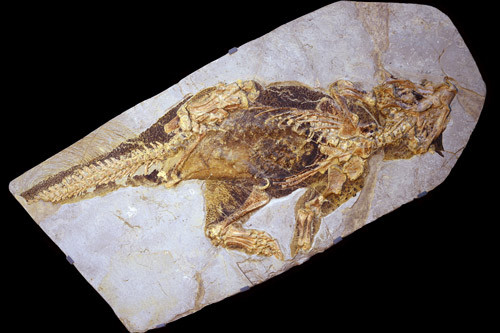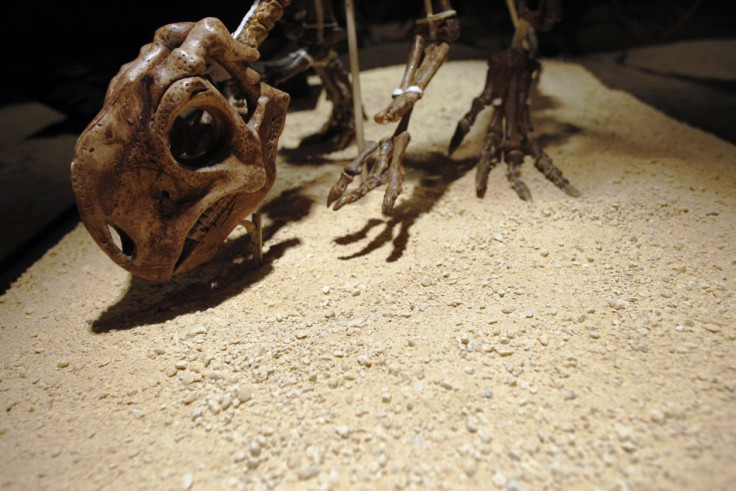Scientists discover evidence that one dinosaur could make itself seem 'flat'
The Chinese Psittacosaurus could disguise itself from predators.

Scientists have discovered a way to recreate the skin tones of dinosaurs, which revealed how one Chinese dinosaur manipulated shadows to help make it appear flat.
Researchers made the remarkable discovery while studying fossils of the Chinese psittacosaurus which walked the Earth some 133 million years ago.
Scientists from the University of Bristol found the prehistoric creature used countershading to adapt to its environment and avoid predators.
Countershading an animal's underside is a light shade and the upper portion remains dark, which makes the dinosaur appear flat when in certain lighting.
This the first ever time evidence of camouflage behaviour has been seen in dinosaurs.
Scientists also believe the discovery proves the dinosaur must have lived in a forest environment as "dinosaur's patterns would have been cryptic in a forest, but not open, habitat".
Dr Jakob Vinther, Professor Innes Cuthill and their colleagues were able to reconstruct the Psittacosaurus' skin colours, when the realised that microscopic structures in its fossils feathers were not bacteria, but were melansomes – structures that contain colour pigments in animal skin and feathers.

Palaeontologist and co-author of the study Vinther said the creature would have made a great modern day pet as it was "very cute".
Psittacosaurus means "parrot-lizard", named after its parrot-like beak, and it was an early relative of the three-horned triceratops.
Dr Vinther said: "We predicted that the psittacosaur must have lived in a forest. This demonstrates that fossil colour patterns can provide not only a better picture of what extinct animals looked like, but they can also give new clues about extinct ecologies and habitats."
The findings are published in the Cell Press journal Current Biology.
© Copyright IBTimes 2025. All rights reserved.






















